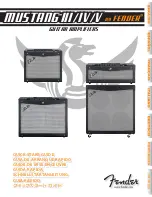
For LED1, bend the LED leads 90°, paying attention to the polarity and which way it will face through
the rear panel. Since the LED will be inline with the center of the DC power jack, insert the LED into
the board until the LED is aligned properly. Solder one LED pin, then heat the pad and make small
adjustments if needed. Then, solder the other pin.
For LED2, also bend the pins 90° (noting the polarity and direction), then install the front panel
temporarily by placing it over the 3.5mm mini phone jacks and volume pot. Insert the LED into the
board until the lens is aligned to the hole in the panel, and push it into the hole. Solder one LED pin,
and make any adjustments as necessary. Solder the other pin.
The easiest way to solder in the battery contacts is to first attach them to a 9V battery (preferably a
dead one), making sure that the two contacts do not touch, and then carefully insert the contacts into
the board. Be sure the battery positive and negative contacts go into the correct locations! They are
marked clearly on the board, and should match the labels on the battery (Also see the photo above).
Before soldering in the battery contacts, you should check the fitment into the case. When the battery
is snapped into the contacts, there will usually be about 1mm to 1.5mm gap between the battery and
the top surface of the board. If the battery is too thick, the whole assembly may not fit into the case. In
that event, you can file away a portion of the bottom of the battery contacts to eliminate the gap and
obtain additional clearance. See the following diagram.
When soldering the battery contacts, it will help to first secure the battery and contacts to the board by
wrapping several turns of rubberband around the whole assembly. As with the jacks, you should fill
each hole with solder.
Please be aware that even a dead battery may have enough voltage to cause component damage if
you accidently short circuit either battery contact to other points on the board, such as with DMM
probes, pliers, or some other metallic tool. Handle the board carefully. After you're done soldering the
battery contacts, remove the battery.
Clean up the solder flux residue from the board with isopropyl alcohol (or electronics flux remover)
and a brush. Using your diagonal cutter, trim all protruding pins, leads, solder tabs, etc., on the bottom
side as close to the board as possible to prevent a short circuit to the case after installation.
Inspect all solder connections carefully, using a magnifying glass, to make sure there are no solder
bridges or cold solder joints. Use a multimeter in ohms scale to check for short circuits. Correct any
mistakes before moving on to the next phase.
Proceed to t








































